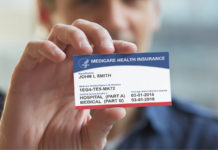Although your garage door offers security and convenience, neglecting its care can lead to serious problems. Surprisingly, injuries related to garage doors lead to over 20,000 visits to the emergency room each year, as reported by the International Association of Certified Home Inspectors. The good news is that professional garage door repair services can help prevent these accidents and ensure your home stays secure and functional. By exploring the information below, you can find a garage door repair service that prioritizes your safety and peace of mind.
Why Garage Doors Need Repair
Natural Wear and Tear Over Time
Garage doors, like all mechanical systems, naturally wear out over time. The continuous opening and closing, along with exposure to outdoor conditions, can cause components to deteriorate.
Springs may lose their tension, rollers can wear out, and panels can fade or warp. Additionally, changing temperatures, humidity, and age can affect materials, making them fragile or corroded.
Regular maintenance can extend their lifespan, but eventually, repairs or replacements are needed to ensure safety and functionality.
Accidental Damages
Accidents can result in significant damage to garage doors. Cars may back into them, children might accidentally hit them with balls or toys, or severe weather conditions like hurricanes and hailstorms can cause dents or structural damage.
Falling tree branches, vandalism, or unexpected events can also cause harm. These accidental damages not only impact appearance but can compromise the door’s structural integrity and safety, necessitating prompt repair or replacement.
Technical and Electronic Malfunctions
Modern garage doors often have electronic components such as sensors, openers, and remote controls. Over time or due to external factors, these components can malfunction.
Circuitry can fail, sensors may become misaligned or dirty, or power surges can damage the system. Battery issues in remote controls or interference from other devices can also disrupt operations.
These technical issues require diagnostic assessments and repairs, as they can prevent the door from operating correctly and safely.
Misalignment Issues
Misalignment is a common problem with garage doors. Tracks can bend, rollers may come out, or the door might hang unevenly. This can result from regular use, accidental bumps, or faulty installations.
An improperly aligned door can place undue stress on the entire system, leading to increased wear and a shortened lifespan. It can also cause noisy operations and safety hazards. Addressing misalignment promptly can prevent further complications and costly repairs.
Common Garage Door Problems
Broken or Weakened Springs
One of the most frequent garage door issues is a broken or weakened torsion or extension spring. These springs bear the full weight of the door, aiding in its smooth operation. Over time and through countless opening and closing cycles, these springs can wear out, snap, or lose tension.
A broken spring can render the door immobile, and attempting to operate it can be dangerous. Professionals should handle replacement, as mishandling springs can result in injuries.
Damaged or Misaligned Tracks
Tracks guide the garage door smoothly up and down. Over time, they can become bent, damaged, or misaligned due to impacts or natural wear.
A misaligned or damaged track can cause the door to become stuck, wobble, or move unevenly. Immediate attention is required to prevent further problems, as operating a door on a compromised track can worsen the damage or affect other components.
Door Opener Malfunctions
Automatic garage door openers can experience various issues, from electrical faults to mechanical wear. Problems might include the door not responding to remote commands, the door reversing direction unexpectedly, or the opener making grinding sounds without moving the door.
Regular maintenance, inspection of wiring, and sensor checks can help, but parts replacement or reprogramming may sometimes be necessary.
Noisy Doors
A garage door that becomes unusually noisy can indicate multiple issues. Screeching, grinding, or banging sounds could suggest friction between parts, insufficient lubrication, or loose hardware.
Addressing the noise often involves tightening loose components, applying lubricant to moving parts, or replacing worn-out hardware. Regular maintenance can prevent many noise-related issues.
Damaged Panels
Garage door panels can become dented, warped, or cracked due to accidental impacts or natural wear and tear. Damaged panels are not just unsightly; they can affect the door’s structural integrity and insulation properties. Depending on the extent of damage, panels may need repair or replacement.
Worn-out Weather Sealant
The weather sealant or weatherstripping at the bottom of a garage door ensures a tight seal against external elements, providing insulation and preventing pests or debris from entering. Over time, this sealant can wear out, crack, or become brittle, reducing its effectiveness.
Replacing old weatherstripping is essential for maintaining energy efficiency and protection against external factors.
Garage Door Repair Services: What to Expect
Initial Inspection and Diagnosis
When seeking garage door repair services, the first step typically involves a thorough inspection. Experienced technicians assess the door’s condition, checking for visible damage, wear, and potential issues.
The goal is to identify the underlying problem, whether it’s related to the door itself, the opener, springs, or any other component. This diagnostic phase ensures that the appropriate repair actions are recommended.
Cost Estimates and Transparency
Following the initial diagnosis, the technician should provide a detailed cost estimate. This estimate usually breaks down the cost of parts and labor. A reputable garage door service will be transparent about all potential costs, with no hidden fees.
Some companies may offer a fixed rate for specific services, while others may charge by the hour. Homeowners need to understand and agree upon the pricing structure before proceeding with repairs.
Repair Process
Once the problem has been identified, and the cost estimate is approved, the repair process begins. Technicians replace or repair damaged parts, ensuring that all components work correctly.
Repairs can range from replacing worn-out springs to realigning tracks or even replacing panels. The complexity and duration of the repair depend on the severity of the issue but are generally carried out with efficiency and expertise.
Testing and Quality Assurance
After completing the repairs, ensuring that the garage door operates smoothly is crucial. Technicians test the door multiple times, checking its balance, alignment, and functionality.
This quality assurance phase ensures that the problem has been fully addressed, and there are no lingering issues. Knowing that their garage door is safe and functional provides homeowners with peace of mind.
Maintenance and Preventive Measures
Many garage door services offer homeowners tips and guidelines for maintaining their doors after repairs. Regular maintenance can prevent many common problems and extend the door’s lifespan.
This may involve lubricating moving parts, checking for signs of wear, and ensuring the door is properly balanced. By following these preventive measures, homeowners can avoid frequent repairs and ensure their garage doors last longer.
Conclusion
Professional garage door repair services ensure the safety and durability of your garage door system. Relying on experts guarantees that the work is done correctly, using the right tools and parts. This not only prevents potential accidents but also extends the lifespan of your garage door.
Regular maintenance of your garage door is crucial. It ensures smooth operation and identifies minor issues before they become major problems. Prioritizing routine checks allows you to enjoy a consistently functional and safe garage door.






















